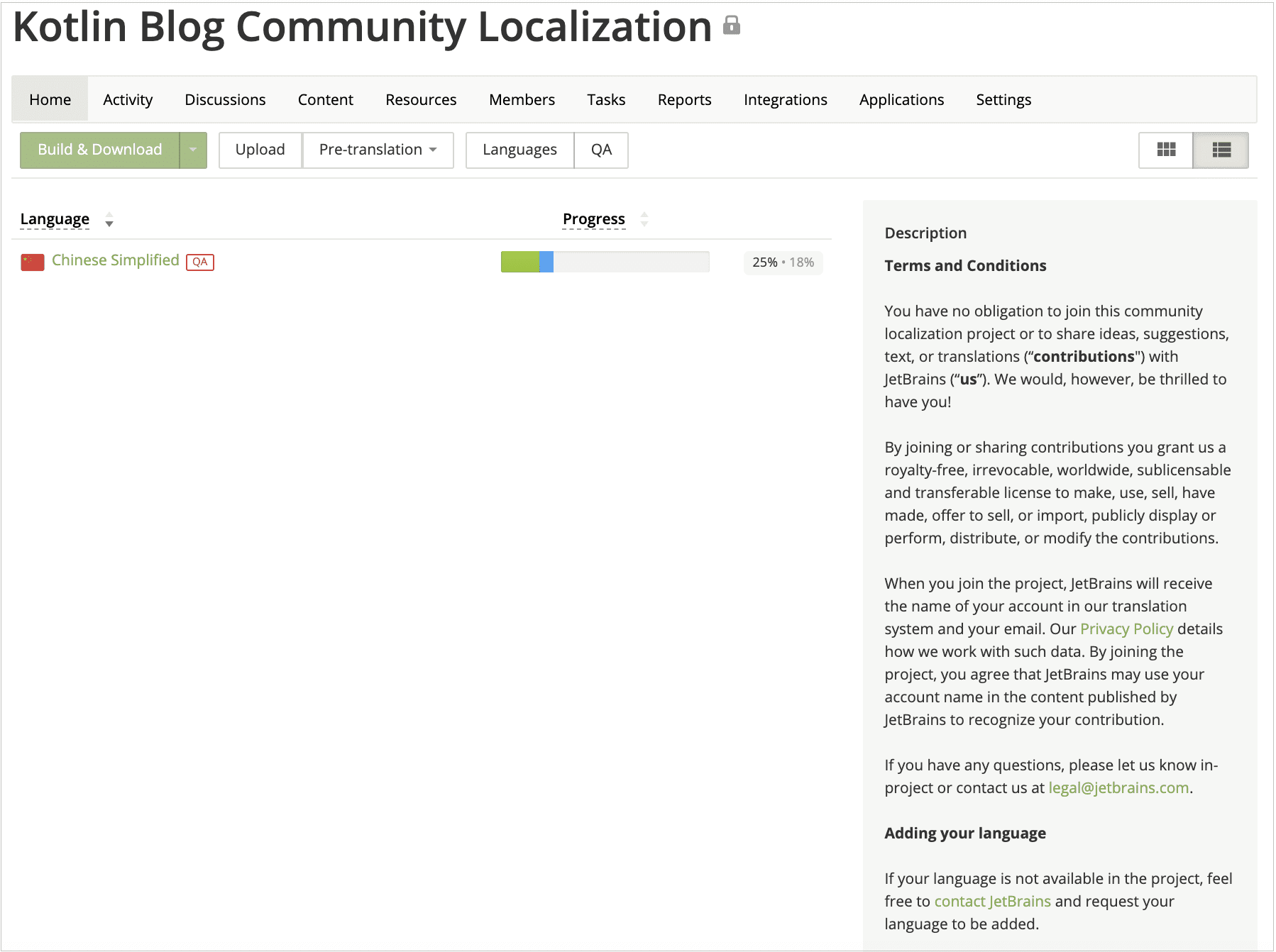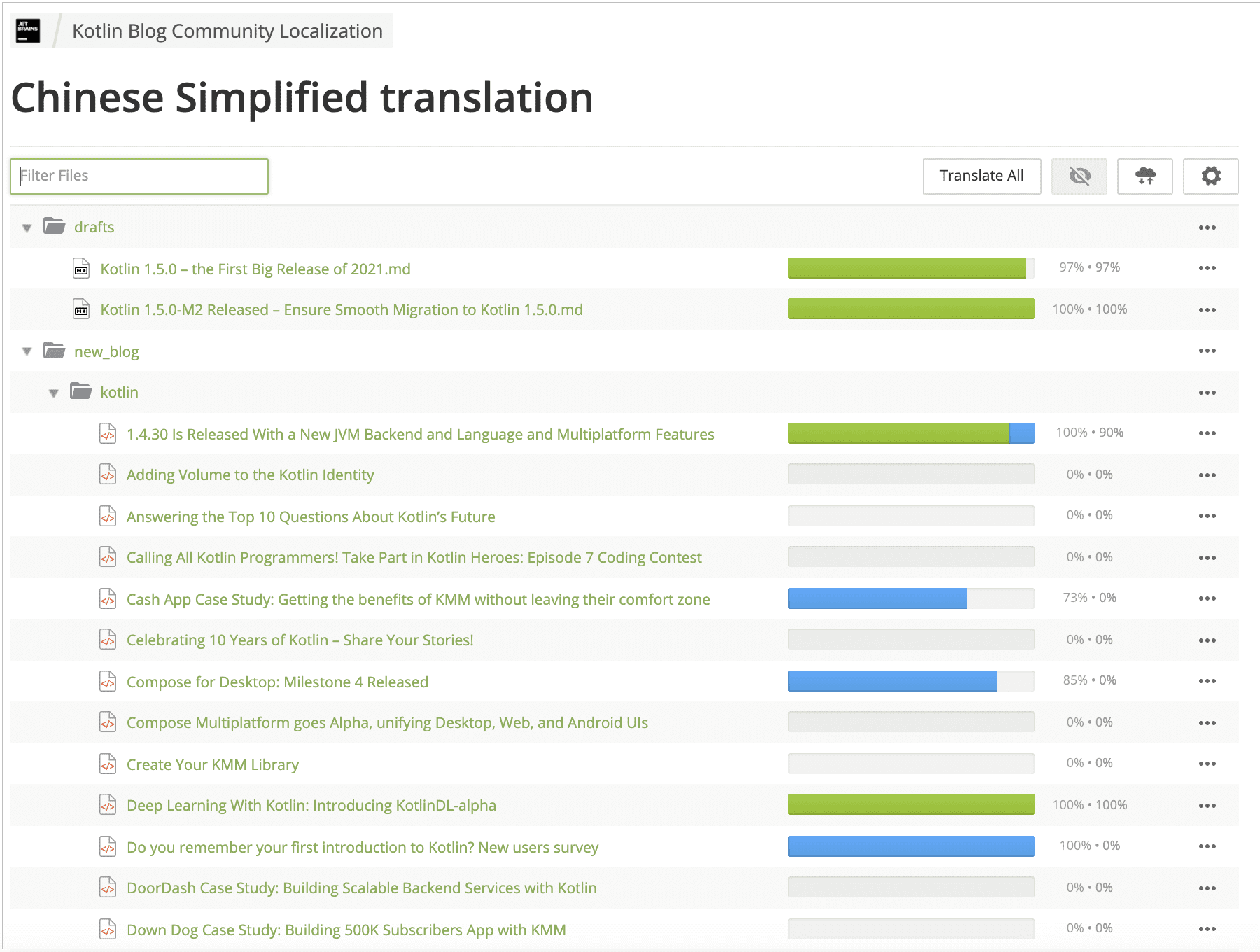Kotlin
A concise multiplatform language developed by JetBrains
Join Our Community Localization Project for the Kotlin Blog
The Kotlin community is very active worldwide, supporting the development of the language and helping us share our news. We mostly communicate with you in English, and we appreciate that you create content in your native languages to make Kotlin information accessible to everyone.
JetBrains is always happy to support you on this journey. We’ve launched a project for community localization of the Kotlin blog in Crowdin, a cloud-based localization management platform.
To request that your language be added, comment on this post or contact JetBrains in our translation project.
The initiative for community translations of the Kotlin blog was prompted by our user community in China that hosts and operates https://www.kotlincn.net/, in addition to translating and publishing Kotlin blogs in Chinese. Their hard work and cooperation has resulted in a more complete single source of information, the JetBrains Kotlin blog. We’re grateful for this!
How to contribute your translations
The community localization of the Kotlin blog is a public Crowdin project. Anyone willing to contribute is welcome to join it. At the moment, Chinese is the only localization language. You can request to have your language added by commenting on this post or contacting JetBrains in Crowdin.
When we publish or plan to publish a new blog post in English, we upload it to Crowdin, where you can use the Crowdin translation editor to localize the text. Here’s how you should proceed:
- Go to the Kotlin Blog Community Localization project. You’ll be prompted to log in or sign up for your own account.
- Read the terms and conditions in the project description before submitting your translations.

- Click the language that you want to provide translations for and choose a post from the list.

- Enter your translations into the Crowdin editor.
- Select the source string in the left panel.
- In the middle panel, view the source string above the input area for translations.
- Below the input area for translations, view suggestions from other project members, translation memory, and machine translation (if any are available).
- In the right-hand panel, view any comments related to the selected source string – they can help you with your translation. If you have a question, add it here, check the Issue box, select the type from the drop-down list, and click the arrow to save the comment. It will be visible to translators of all languages. Our localization managers will answer your questions and resolve the issue.
- Return to the middle panel and review the suggestions in your language (if any are available).
- If you find a similar translation in the suggestions, click it and it will appear in the area for translation. Make changes to the suggestion and click Save.
- If you find a suitable translation in the suggestions, click the Use and Save icon. The system will save the translation for you and navigate you to the next string.
- If you do not find any similar or suitable translations, provide your own translation and click Save.
- After the translation is complete, our editors at JetBrains will review and approve it, and the article will be posted on the Kotlin blog with a mention thanking the translator.
If you need more information about working with Crowdin, please read this article.
We greatly appreciate any time and effort you decide to invest, and hope that this project will become one more way for us to connect and collaborate with you. Your contribution to the Kotlin Blog Community Localization project will help make Kotlin content available to people around the world in their native languages!
Subscribe to Kotlin Blog updates








